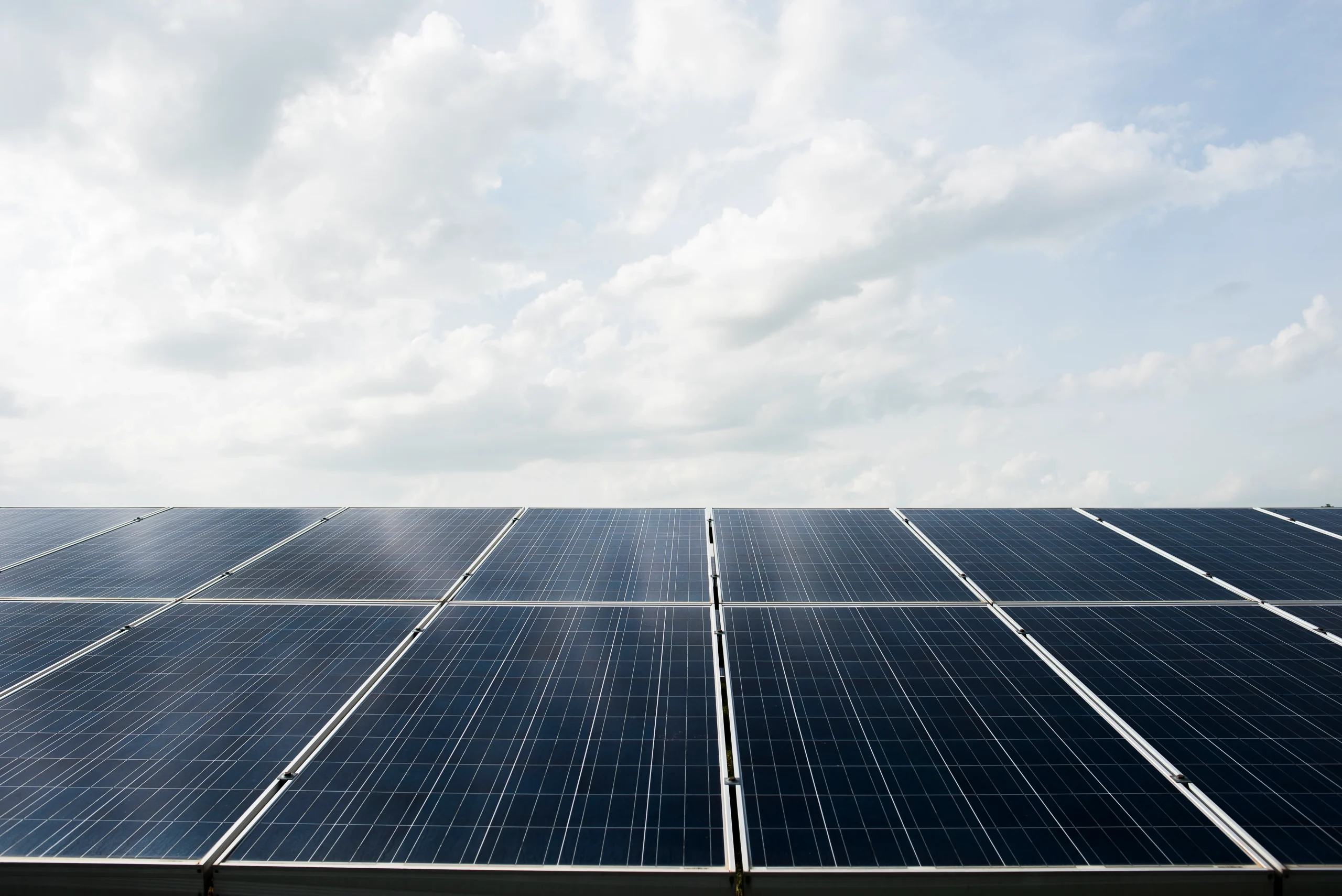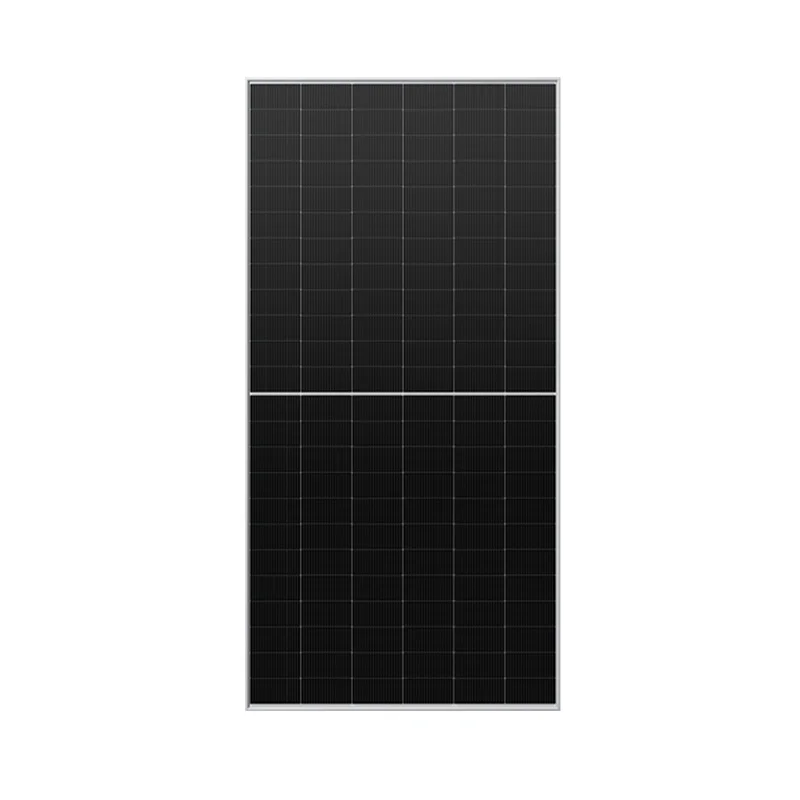يعد التحول إلى الطاقة الشمسية خيارًا ذكيًا للشركات التي تهدف إلى خفض النفقات وتعزيز الصداقة للبيئة وتحقيق الاكتفاء الذاتي في مجال الطاقة. ومع ذلك ، يحتاج مشروع شمسي تجاري جيد التنفيذ إلى إعداد شامل. ويشمل ذلك التحقق من جدوى الموقع وحساب متطلبات الطاقة واختيار المعدات المناسبة واتباع القواعد القانونية. يغطي هذا الدليل الجوانب الحاسمة للمنظمات التي تبدأ مبادرات شمسية. وتشمل المواضيع تكوين النظام وإدارة الميزانية وتقنيات التثبيت والصيانة المستمرة. سواء كان النظر في الإعدادات القائمة على السطح أو الأرض ، فإن معرفة هذه العناصر تضمن حل شمسي فعال وصديق للميزانية مخصص للتطبيقات التجارية. فيما يلي المراحل الحيوية للانتقال السلس إلى الطاقة الشمسية.

العوامل الرئيسية التي يجب تقييمها قبل إنشاء الألواح الشمسية التجارية
كيفية تحديد احتياجات الطاقة لمرافق الأعمال؟
المرحلة الأولية في أي مشروع لوحات شمسية للشركات تتضمن حساب احتياجاتك من الكهرباء. يساعد إجراء مراجعة متعمقة لاتجاهات استهلاك الطاقة في عقارك على تحديد أوقات الاستخدام العالية والطلب الكلي. هذا يؤكد أن الإعداد المحدد يمكن أن يلبي احتياجاتك بشكل صحيح دون توليد الكثير أو القليل من الكهرباء. تساعد الموارد مثل تقييمات الطاقة وبيانات المرافق السابقة في هذه المرحلة ، وتقدم بيانات عن وضعك الحالي للطاقة.
هل موقعك مناسب للتجهيز الشمسي؟
ما هي حالة السقف وقدرته على تحمل الحمل؟
بالنسبة للأنظمة القائمة على السقف ، فإن حالة السقف حيوية. هناك حاجة إلى سقف قوي بقوة كافية لحمل الوحدات الشمسية وإطار الدعم. كما يجب إصلاح أو ترقية الأسطح القريبة من حد الخدمة قبل إضافة الألواح الشمسية لمنع المشاكل اللاحقة.

هل يجب أن تختار الأنظمة القائمة على الأرض أو على السطح؟
الترتيبات القائمة على الأرض تعمل بشكل جيد للممتلكات ذات الكثير من المناطق المفتوحة. يسمحون بتعديل الموقع والزاوية للالتقاط الأمثل للشمس. تستخدم الأنظمة القائمة على السقف الهياكل الحالية، والحفاظ على الأرض ولكن تحتاج إلى تقييم دقيق للظلال ومواءمة السقف.
ما هي قواعد المنطقة والموافقات؟
اتباع قوانين استخدام الأراضي المحلية ومعايير البناء وخطوات الإذن إلزامي لجميع المشاريع الشمسية التجارية. قد تغطي القواعد قيود حجم الإعداد أو قواعد المظهر أو احتياجات ربط شبكة الكهرباء. ويمكن للتعاون مع خبراء ماهرين يعرفون اللوائح الإقليمية تبسيط هذا الإجراء.
اختيار أفضل لوحة شمسية لتطبيقات الأعمال
فهم الاختلافات الرئيسية بين أنواع الألواح الشمسية ومكوناتها ضروري للشركات لتحسين الكفاءة والتكلفة والاستدامة في أنظمة الطاقة الخاصة بها.
كيف تختلف أنواع الألواح الشمسية المختلفة؟
أحادي الكريستال مقابل لوحات متعددة الكريستال
يتم الاعتراف باللوحات الكريستالية الأحادية لأدائها المتفوقة ومظهرها السلس ، لكنها تكلف أكثر. الألواح متعددة الكريستالات أكثر تكلفة ، على الرغم من أنها أقل فعالية إلى حد ما ، مما يجعلها مناسبة للمشاريع دون قيود مساحة.
الألواح الشمسية المرنة واستخداماتها
الألواح المرنة رقيقة وقابلة للانحناء ، مثالية للأسطح غير العادية أو المباني التي قد لا تناسب الألواح القياسية. ومع ذلك ، عادة ما يكون لديها مستويات أداء أقل من خيارات الكريستال.
لماذا محولات الطاقة مهمة في إعدادات الطاقة الشمسية التجارية؟
تغير محولات الطاقة الكهرباء المستمرة (DC) التي تصنعها الألواح الشمسية إلى التيار المتناوب (AC) المستخدم في معظم أجهزة الأعمال. اختيار المحولات المتميزة يضمن أعلى تشغيل النظام والمتانة على مر السنين.
هل يجب أن تفكر في تخزين الطاقة لتحسين الأداء؟
تخزين الطاقة يسمح للشركات بتوفير الطاقة الفائضة التي يتم إنتاجها خلال الفترات المشمسة للاستخدام في الليل أو في الأيام المغمورة. هذا يعزز الاعتماد على الذات في الطاقة ويزود الطاقة الطارئة أثناء الانقطاع.
التخطيط لنظام الألواح الشمسية التجارية الناجحة
لماذا إجراء تقييم مفصل للطاقة؟
تقييم الطاقة يجد النفايات في الإعداد الحالي ويظهر أين يمكن للطاقة الشمسية أن يكون لها أكبر تأثير. من خلال فحص الإضاءة وأنظمة التحكم في المناخ وغيرها من الوظائف الثقيلة الطاقة ، يمكنك إنشاء إجابة مخصصة تعزز عائدات الاستثمار.
كيف يمكنك تحسين تصميم الإعداد وموقع الوحدة؟
محاذاة وتعديل الزاوية
يضمن التوازن الصحيح حصول الوحدات على أقصى قدر من ضوء الشمس يومياً. في العديد من المناطق ، يعطي وضع موجه جنوباً بزاوية مثالية تتطابق مع موقعك أفضل النتائج.
تقليل الظلال لأعلى أداء
يمكن لظلال الهياكل المجاورة أو النباتات أو غيرها من الانسدادات أن تقلل بشكل كبير من فعالية الوحدة. يساعد استخدام برامج تقييم الظل على الكشف عن المخاوف المحتملة أثناء التخطيط.
إذا كنت تفكر في الانتقال إلى خيارات الطاقة المتجددة لشركتك ولكن تحتاج إلى المشورة المهنية خلال كل مرحلة ، من التصميم إلى الانتهاء ، وونفولت يمكن المساعدة! مع التكنولوجيا الحديثة والإجابات المخصصة المصممة خصيصا لاحتياجات الأعمال، فإنها تضمن إدراج الطاقة الشمسية بسلاسة في أنشطتك مع تحسين الأداء والوفورات.
كشفت دراسة Fraunhofer ISE لعام 2024 أن أدوات تحسين الظل المدفوعة بالذكاء الاصطناعي يمكن أن تزيد من إنتاج الطاقة السنوي بنسبة تصل إلى 8.7٪ في إعدادات الأعمال القائمة على المدينة (المصدر: Fraunhofer ISE Solar Energy Quarterly ، يناير 2024).
إجراءات الإعداد للألواح الشمسية التجارية
كيفية إعداد الموقع للتثبيت؟
إعداد الموقع هو خطوة أولية رئيسية في إعداد الألواح الشمسية التجارية. وهذا يعني التحقق من الموقع للتأكد من أنه يفي بالمعايير الهيكلية والبيئية. قم بمراجعة كاملة للموقع للحكم على عناصر مثل التعرض للشمس ، والظل من العناصر القريبة ، والمساحة المفتوحة. بالنسبة لإعدادات السقف، فحص حالة السقف وقوته للتحقق من أنه يمكن أن يحمل الألواح الشمسية. تحتاج النظم الأرضية إلى التطهير والتسوية والتفتيش الأرضي لإعطاء قاعدة متينة.
ما هي الخطوات لإصلاح الألواح؟
وضع هياكل دعم
تشكل هياكل الدعم أساس إعدادك الشمسي ، مما يوفر الاستقرار وأفضل وضع لأعلى جمع للطاقة. ابدأ ببناء إطار الدعم بعد توجيهات صانع. ربط بقوة دعم السقف باستخدام المثبتات أو الغراء المصنوعة لأسلوب السقف الخاص بك. بالنسبة لأنظمة الأرض، تضمين الأعمدة في الأرض أو استخدام قواعد الأسمنت لضمان طول العمر.
إرفاق الألواح بالدعم
بعد تثبيت نظام الدعم ، إصلاح وحدات الشمسية بعناية باستخدام مقاطع أو إطارات. تصف كل وحدة لتقليل المساحات وزيادة التعرض للشمس. قم بتأمين جميع الروابط بقوة ، ولكن لا تشدد بشكل مفرط ، مما قد يضر بالوحدات أو الدعم.
ما هي خطوات الإعداد الكهربائي والربط؟
إضافة محولات وتخزين الطاقة
يربط الإعداد الكهربائي وحدات الطاقة الشمسية الخاصة بك بمحول ، الذي يغير التيار المستمر (DC) إلى التيار المتناوب (AC) لمبنى الخاص بك. ضع المحولات بالقرب من مصدر الطاقة الأساسي لتقليل هدر الطاقة أثناء النقل. إذا شملت تخزين الطاقة، أضفها الآن، وضمان أنه يعمل مع المحول الخاص بك والتكوين الكامل.
كيف يتم فحص الإعداد والتنشيط؟
قبل بدء النظام الشمسي الخاص بك ، قم باختبار كامل للتحقق من وظيفته وسلامته. فحص جميع الروابط الكهربائية لمقاومة التدفق والعزل المناسبة. اختبر انتاج الجهد من كل مجموعة وحدة ومطابقته مع الأرقام المتوقعة. وأخيرا، مراقبة وظيفة النظام في ظل الظروف الفعلية لتأكيد الأداء السلس.
طرق الصيانة لضمان استدامة الأنظمة الشمسية التجارية
لماذا التنظيف والتفتيش المنتظم ضروري؟
الصيانة المتكررة أمر حاسم للحفاظ على النظام الشمسي الخاص بك يعمل بأعلى كفاءة. يمكن أن تتجمع التراب والغبار ونفايات الطيور وغيرها من الجسيمات على الوحدات بمرور الوقت ، مما يقلل من قدرتها على التقاط الشمس. تخطط للتنظيف المنتظم باستخدام المواد الناعمة والماء. كما تحقق من جميع الأجزاء - بما في ذلك الأسلاك والمحولات والدعم - لأعراض الضرر.
كيف يمكن للأدوات الحديثة المساعدة في تعقب وظيفة النظام؟
تتيح لك أدوات التتبع الحالية مراقبة مؤشرات الأداء المهمة مثل إنتاج الطاقة ومستويات الكفاءة وحالة النظام في الوقت الحقيقي. ترسل هذه الأدوات تحذيرات للمشاكل المحتملة مثل انخفاض إنتاج الوحدة أو أخطاء المحول ، مما يساعدك على إصلاح المشاكل بسرعة قبل أن تتدهور.
ما هي المشاكل النموذجية في إعدادات الأعمال؟
وتشمل بعض التحديات المتكررة الروابط الكهربائية غير المستقرة، وعطل المحولات، وانخفاض أداء الوحدة بسبب الطقس أو الأجزاء الشيخوخة. تساعد الفحوصات الروتينية على العثور على هذه المشاكل في وقت مبكر حتى يمكن إصلاحها دون وقف العمليات.
استخدام منتجات WonVolt لنتائج ممتازة
لماذا تختار WonVolt لمتطلبات أعمالك الشمسية؟
عند اختيار الحلول الشمسية التجارية التي تدمج التكنولوجيا المتقدمة مع الموثوقية، WonVolt تتفوق كشركة رائد القطاع. تشمل مجموعة منتجاتها الحديثة وحدات عالية الأداء مصممة خصيصا للمنشآت الكبيرة. من خلال اختيار منتجات WonVolt ، تحصل على وظائف مبتكرة تحسن جمع الطاقة مع تقليل تكاليف التشغيل.
كيف يعزز WonVolt الكفاءة في المنشآت الكبيرة؟
WonVolt يوفر حلول مخصصة مثل وحدات مزدوجة الجانبين التي تجمع ضوء الشمس من الجانبين لإنشاء المزيد من الطاقة في المناطق المفتوحة. تتميز محولاتها الذكية بوظائف تتبع مباشرة تسهل وظائف الصيانة مع تحسين الأداء.
الأسئلة الشائعة
Q1: ما هو عمر الأنظمة الشمسية التجارية؟
ج: يشير أحدث تقرير PVEL لعام 2024 إلى أن أنظمة الأعمال الرائدة تحتفظ الآن بنسبة 92٪ من الإنتاج الأولي بعد 25 عامًا ، وارتفاعًا من 88٪ في عام 2023 بفضل تقنيات أفضل لمكافحة التآكل.
س2: هل يمكنني في وقت لاحق توسيع الإعداد الشمسي الخاص بي؟
ج: نعم ، تتيح لك التصاميم القابلة للتوسع إضافة المزيد من الوحدات أو التخزين مع زيادة احتياجات الطاقة الخاصة بك.
س3: هل تحتاج الإعدادات الشمسية التجارية إلى أذونات خاصة؟
ج: نعم ، مطلوب الحصول على تصاريح لمتابعة القواعد المحلية حول معايير البناء واحتياجات اتصال شبكة الكهرباء.

